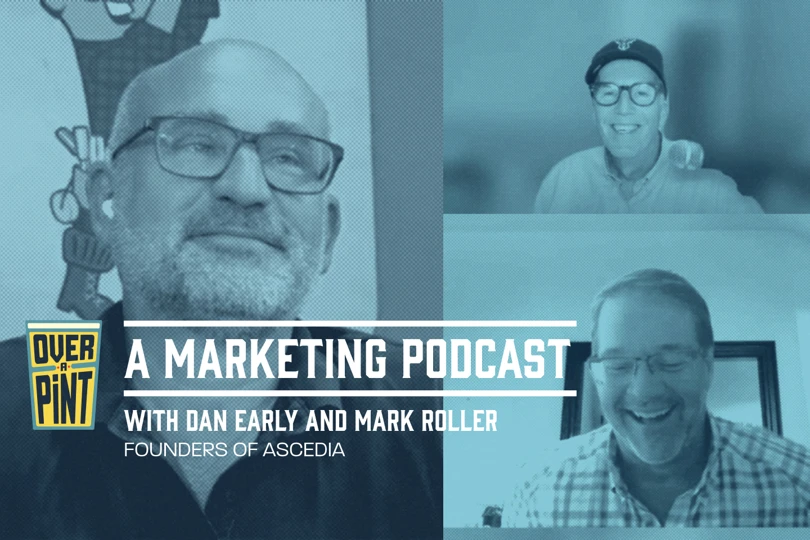The Shift: From Search Results to AI Answers
“Is Google killing my website traffic?” This is the question every business owner is asking as AI-powered search results increasingly answer user questions directly, without requiring clicks to source websites.
The reality: We’re in a massive transition period where traditional SEO still matters, but AI search engines (Google’s SGE, Bing Copilot, ChatGPT search, Perplexity) are fundamentally changing how content gets discovered and presented.
The opportunity: While many businesses panic about lost clicks, forward-thinking companies are optimizing their content to become the authoritative sources that AI systems cite, quote, and recommend.
This comprehensive guide shows you how to prepare your WordPress site for the AI search era – based on real client assessments and current best practices.
Understanding AI Search vs. Traditional Search
Traditional SEO: Click-Through Model
- Goal: Rank high in search results to get clicks
- Success metric: Click-through rate and page views
- Content strategy: Keyword-focused pages optimized for human searchers
- User journey: Search → Click → Read → Convert
AI Search: Citation and Authority Model
- Goal: Become the source AI systems trust and cite
- Success metric: Brand mentions, citations, and direct recommendations
- Content strategy: Comprehensive, structured content optimized for AI comprehension
- User journey: Search → AI Answer (with source attribution) → Potential site visit for deeper information
Why This Matters for Your Business
The challenge: AI can answer many questions without users visiting your site.
The opportunity: When AI does cite sources, those websites gain enormous credibility and qualified traffic from users seeking deeper information.
Real example: Instead of 10 clicks from a generic search result, you might get 3 highly qualified visitors who specifically want to contact you because AI recommended your business.
Core AI Optimization Strategies
1. Entity and Trust Signals (HIGHEST PRIORITY)
What AI systems look for:
- Clear brand identity and authority markers
- Consistent entity mentions across the web
- Trust signals that validate your expertise
Implementation checklist:
Organization Schema (Critical):
json
{
"@type": "Organization",
"name": "Your Company Name",
"url": "https://yoursite.com",
"logo": "https://yoursite.com/logo.png",
"sameAs": [
"https://www.linkedin.com/company/yourcompany",
"https://twitter.com/yourcompany",
"https://www.facebook.com/yourcompany"
],
"address": {
"@type": "PostalAddress",
"streetAddress": "123 Business St",
"addressLocality": "Your City",
"addressRegion": "State",
"postalCode": "12345"
}
}
About Page Optimization:
- Comprehensive “About Us” page with leadership bios
- Clear explanation of expertise and experience
- Professional credentials and certifications
- Company history and achievements
- Team member profiles with Person schema
Social Profile Connection:
- Link all social profiles with consistent branding
- Use sameAs schema properties to connect all profiles
- Maintain consistent NAP (Name, Address, Phone) across platforms
2. Enhanced Schema Implementation
Beyond basic schema – what AI systems prioritize:
SearchAction Schema (High Impact):
json
{
"@type": "WebSite",
"url": "https://yoursite.com",
"potentialAction": {
"@type": "SearchAction",
"target": "https://yoursite.com/search?q={search_term_string}",
"query-input": "required name=search_term_string"
}
}
FAQ Schema (Critical for AI):
json
{
"@type": "FAQPage",
"mainEntity": [{
"@type": "Question",
"name": "How long does the process take?",
"acceptedAnswer": {
"@type": "Answer",
"text": "The typical process takes 2-4 weeks depending on complexity..."
}
}]
}
HowTo Schema (AI Loves Process Content):
json
{
"@type": "HowTo",
"name": "How to Apply for Our Program",
"step": [{
"@type": "HowToStep",
"name": "Review Requirements",
"text": "Check eligibility criteria on our requirements page"
}]
}
3. Content Depth and Clustering Strategy
The AI Content Formula:
Pillar Pages (3,000+ words each):
- Comprehensive topic coverage
- Multiple H2 and H3 sections answering related questions
- Internal links to supporting content
- FAQ sections with schema
- Related topic connections
Content Cluster Architecture:
Main Topic (Pillar Page)
├── Subtopic 1 (Supporting Article)
├── Subtopic 2 (Supporting Article)
├── FAQ Page (Schema Enhanced)
├── How-To Guide (HowTo Schema)
└── Case Studies/Examples
Example structure for service page:
- Service Overview (What it is, who it’s for)
- Benefits and Outcomes (What clients gain)
- Process/Methodology (How it works – HowTo schema)
- Pricing and Packages (Clear cost information)
- Case Studies (Real results with examples)
- FAQ Section (Common questions with schema)
- Team/Expertise (Who delivers the service)
- Getting Started (Next steps and contact)
4. Technical Infrastructure for AI
Indexing and Freshness Signals:
Last-Modified Headers:
php
// Add to WordPress functions.php
function add_last_modified_header() {
if (is_single() || is_page()) {
$last_modified = get_the_modified_time('D, d M Y H:i:s T');
header("Last-Modified: $last_modified");
}
}
add_action('wp_head', 'add_last_modified_header');
IndexNow Implementation:
php
// Submit URL changes immediately to search engines
function submit_to_indexnow($post_id) {
$url = get_permalink($post_id);
$indexnow_url = "https://api.indexnow.org/indexnow?url=" . urlencode($url) . "&key=your-api-key";
wp_remote_get($indexnow_url);
}
add_action('save_post', 'submit_to_indexnow');
Sitemap Optimization:
- Submit sitemaps to both Google Search Console AND Bing Webmaster Tools
- Include all content types (pages, posts, products, team members)
- Update frequency tags for dynamic content
- Priority settings for most important pages
5. AI Crawler Directives (Future-Proofing)
Creating llms.txt (Optional but Forward-Thinking):
Create /llms.txt file in your site root:
# Large Language Model Instructions
# This site allows crawling for AI training with attribution
User-agent: GPTBot
Allow: /
Disallow: /private/
User-agent: CCBot
Allow: /blog/
Allow: /resources/
Disallow: /admin/
# Preferred citation format
Citation-format: [Site Name] - [Page Title] - [URL]
# Contact for AI partnerships
Contact: ai-partnerships@yoursite.com
Note: llms.txt is not yet a standard, but early adoption shows search engines you’re thinking about AI optimization.
Content Strategy for AI Visibility
The 60-Article Threshold
Industry observation: Sites with 60+ long-form articles (3,000+ words) appear more frequently in AI search results.
Why this matters:
- Content depth signals authority to AI systems
- More content = more opportunities for AI citation
- Topic coverage breadth shows comprehensive expertise
- Internal linking opportunities strengthen topical authority
Practical approach:
- Year 1 goal: 60 comprehensive articles (5 per month)
- Focus on evergreen topics in your expertise area
- Update and expand existing content rather than just creating new
- Quality over quantity – better to have 30 amazing articles than 100 thin ones
Topic Clustering for AI
Traditional SEO: Target individual keywords with separate pages AI SEO: Create comprehensive topic clusters that demonstrate expertise
Example cluster for “WordPress Security”:
Pillar Page: "Complete WordPress Security Guide" (5,000 words)
├── "WordPress Security Plugins Comparison" (2,500 words)
├── "Fixing Hacked WordPress Sites" (3,000 words)
├── "WordPress Security Checklist" (1,500 words)
├── "WordPress Security FAQ" (with schema)
└── "WordPress Security Case Studies" (2,000 words)
Cross-linking strategy:
- Link from pillar to all supporting content
- Link between related supporting articles
- Use descriptive anchor text that helps AI understand relationships
- Include “Related Articles” sections with schema markup
Industry-Specific AI Optimization
Professional Services
High-impact content types:
- Detailed service methodology pages
- Case studies with measurable results
- Process documentation with HowTo schema
- Professional credential and team pages
- Industry-specific FAQ sections
Schema priorities:
- Organization and LocalBusiness schema
- Service schema for each offering
- Person schema for key team members
- FAQ schema for common questions
- Review/Testimonial schema
E-commerce and Products
AI-friendly product content:
- Comprehensive product descriptions (500+ words per product)
- Technical specifications and comparison charts
- Usage guides and installation instructions
- Customer review aggregation with schema
- Product video with VideoObject schema
Recipe sites (special considerations):
json
{
"@type": "Recipe",
"name": "Perfect Chocolate Chip Cookies",
"recipeCategory": "Dessert",
"recipeCuisine": "American",
"keywords": "chocolate chip, cookies, baking, dessert",
"video": {
"@type": "VideoObject",
"name": "How to Make Chocolate Chip Cookies"
},
"nutrition": {
"@type": "NutritionInformation",
"calories": "250"
},
"aggregateRating": {
"@type": "AggregateRating",
"ratingValue": "4.8"
}
}
Local Businesses
Local AI optimization:
- Detailed location and service area pages
- Local FAQ sections (“Do you serve [city name]?”)
- Community involvement and local authority content
- Local business schema with complete information
- Google Business Profile optimization (still crucial)
Measuring AI Optimization Success
New Metrics to Track
Traditional metrics still matter:
- Organic traffic and rankings
- Page views and engagement
- Conversion rates and leads
AI-era metrics to add:
- Brand mention tracking across AI platforms
- Zero-click impression rates (how often you appear in AI answers)
- Direct traffic increases (people finding you through AI recommendations)
- “[Brand name] + topic” search volume (people looking for you specifically)
Monitoring Tools and Techniques
Brand mention monitoring:
- Google Alerts for brand mentions
- Social listening tools for AI-generated content featuring your brand
- Manual testing of AI systems with queries in your expertise area
AI platform testing:
Test queries like:
- "Best [your service] in [your city]"
- "How to [solve problem you address]"
- "[Your industry] expert recommendations"
- "Who are the leading [your profession] companies"
Competitor analysis:
- Which competitors appear in AI search results?
- What content gets cited most often?
- What schema types do leading sites in your industry use?
Platform-Specific Considerations
Google SGE (Search Generative Experience)
Optimization focus:
- E-E-A-T signals (Experience, Expertise, Authoritativeness, Trustworthiness)
- Featured snippet optimization (AI often pulls from these)
- Local business signals for local queries
- Review quantity and quality
Bing Copilot and ChatGPT Search
Key differences:
- Often cites more diverse sources than Google
- Values detailed, educational content
- Shows strong preference for sites with complete schema markup
- Includes more recent content in results
Perplexity and Other AI Search Engines
Success factors:
- Clear, quotable content sections
- Strong topical authority
- Recent publication dates
- Technical accuracy and fact-checking
Real Client Assessment Framework
Our quarterly AI readiness assessment covers:
Entity & Trust Signals (25% of score)
- Organization schema implementation
- About page quality and completeness
- Social profile connections and consistency
- Professional credential presentation
Content Quality & Structure (30% of score)
- Average content length and depth
- Topic cluster implementation
- FAQ coverage and schema
- Internal linking strategy
Technical Implementation (20% of score)
- Schema markup completeness and accuracy
- Site speed and Core Web Vitals
- Mobile optimization
- Indexing and crawl efficiency
AI-Specific Features (15% of score)
- SearchAction schema implementation
- llms.txt or similar AI directives
- Video and media optimization
- Structured data validation
Authority and Citations (10% of score)
- Backlink quality and relevance
- Brand mention frequency
- Industry recognition and awards
- Expert author credentials
Common Questions About AI SEO
“Will AI Search Kill Website Traffic?”
Short answer: It will change traffic patterns, but quality sites will benefit.
What we’re seeing:
- Less traffic from simple informational queries
- Higher-quality traffic from complex queries requiring expert guidance
- Increased direct traffic from AI recommendations
- Better conversion rates from AI-referred visitors
“How Many Blog Posts Do I Need?”
The 60-article benchmark comes from observing successful sites, but quality matters more than quantity.
Realistic approach:
- Start with 20-30 comprehensive articles in your core expertise areas
- Focus on depth over breadth initially
- Update and expand existing content before creating new
- Aim for 3,000+ words per article for pillar content
“Should I Optimize for OpenAI vs. Google?”
Current recommendation: Optimize for Google first, then test with other AI platforms.
Why Google first:
- Largest search volume and business impact
- Most established optimization practices
- Better measurement tools available
- Clearer guidelines for optimization
But also test:
- Submit content to Bing Webmaster Tools
- Test your brand queries in ChatGPT and Perplexity
- Monitor mentions across all AI platforms
“Is Traditional SEO Dead?”
Absolutely not. Traditional SEO fundamentals are more important than ever:
- Quality content is still the foundation
- Technical SEO helps AI systems crawl and understand your site
- User experience signals help determine authority
- Backlinks remain important trust signals
- Local SEO is crucial for local AI results
The evolution: We’re adding AI optimization on top of solid SEO fundamentals, not replacing them.
Getting Started: Your AI Optimization Roadmap
Phase 1: Foundation (Weeks 1-4)
- Implement Organization schema on your homepage
- Optimize your About page with team bios and credentials
- Add FAQ sections to key service pages with schema
- Connect all social profiles with consistent branding
Phase 2: Content Enhancement (Weeks 5-12)
- Identify your top 10 pillar topics in your expertise area
- Expand existing content to 3,000+ words with comprehensive coverage
- Add HowTo schema to process-oriented content
- Create topic clusters with strategic internal linking
Phase 3: Technical Implementation (Weeks 13-16)
- Add SearchAction schema to enable site search
- Implement IndexNow for faster content discovery
- Optimize images with descriptive alt text and structured data
- Create llms.txt file for future AI crawler guidance
Phase 4: Monitoring and Optimization (Ongoing)
- Set up brand mention monitoring across AI platforms
- Test your content in various AI search engines monthly
- Track new metrics like zero-click impressions and direct traffic
- Quarterly assessment of AI readiness and competitor analysis
Professional AI SEO Services
While this guide provides a comprehensive foundation, AI optimization is rapidly evolving and often requires specialized expertise:
Complex AI optimization scenarios:
- Large websites with thousands of pages requiring systematic schema implementation
- E-commerce sites needing product schema optimization for AI shopping results
- Professional services requiring authority building and citation optimization
- Local businesses needing multi-location AI optimization strategies
When to get professional help:
- Your industry is highly competitive in AI search results
- You need comprehensive schema implementation across complex site architecture
- You require ongoing monitoring and optimization of AI platform performance
- You want to stay ahead of rapidly changing AI search algorithms
What’s included in professional AI SEO services:
- Complete AI readiness assessment with scoring and benchmarking
- Custom schema implementation for your specific business type
- Content strategy and optimization for AI visibility
- Ongoing monitoring and optimization as AI platforms evolve
- Quarterly reporting on AI search performance and competitor analysis




.jpg?ext=.jpg?width=760&height=540&rmode-crop&format=webp&quality=90)
